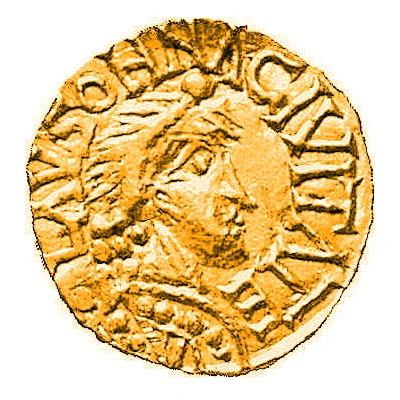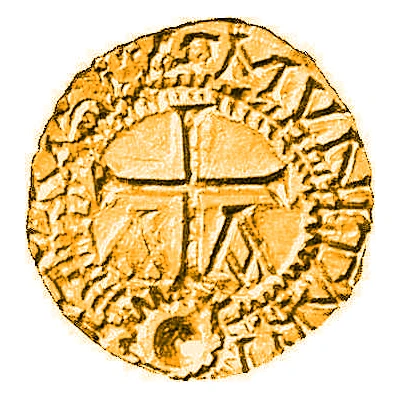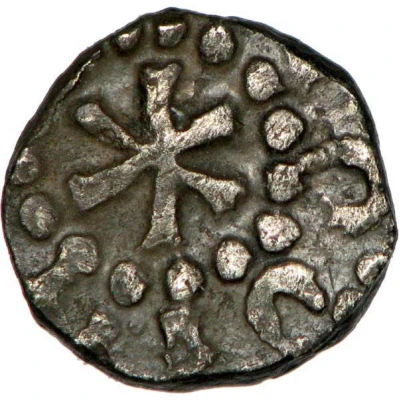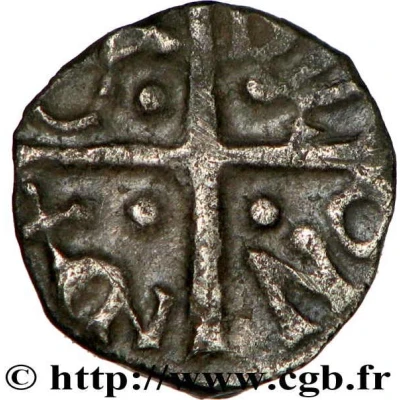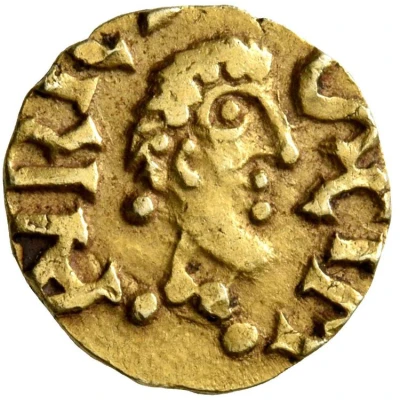
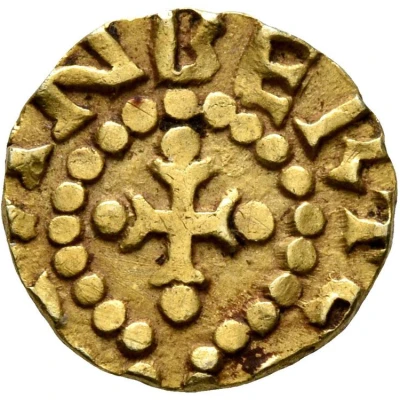

© Leu Numismatik
Tremissis - Moneyer Bertemindus St. Maurice d'Agaune abbey
| Gold | 1.11 g | 12 mm |
| Location | Kingdom of Burgundy (Frankish Kingdoms) |
|---|---|
| Moneyer | Bertemindus |
| Type | Standard circulation coin |
| Years | 640-660 |
| Value | 1 Tremissis (⅓) |
| Currency | Tremissis (476-670) |
| Composition | Gold |
| Weight | 1.11 g |
| Diameter | 12 mm |
| Shape | Round (irregular) |
| Technique | Hammered |
| Orientation | Variable alignment ↺ |
| Demonetized | Yes |
| Updated | 2024-10-09 |
| Numista | N#190202 |
|---|---|
| Rarity index | 97% |
Reverse
Cross pattée ending in four jewels, within stylized wreath with ties at the bottom.
Script: Latin
Lettering: BERTE MIN
Unabridged legend: BERTEMINDUS
Comment
The Merovingian coinage struck at St. Maurice-d'Agaune is of the highest rarity, with Depeyrot recording thirty-six examples in total, of which only five are clerical and name the eponym Saint Maurice. This tremissis was struck from the same dies as the example published by F. Soret: Lettre aux membres de la Soc. d'hist. et archéol. sur les enfouissements monétaires de Genève, 1 (1841), 245, note 2, found in the Canton Geneva in 1841 but misdescribed as reading 'MINOCIVS' on the reverse ever since. The reading can now be corrected to BERE-MIN, a short form of Bertemindo or Bertemindus. (source: Leu Numismatik AG Auction Catalog)Interesting fact
The Tremissis coin is interesting because it was used as a form of currency during a time when the Byzantine Empire was transitioning from a primarily bronze-based currency to a gold-based currency. This coin, made of gold and weighing 1.11g, was a significant change from the previous bronze coins that were much heavier and less valuable. This transition marked a turning point in the empire's economy and monetary system.
